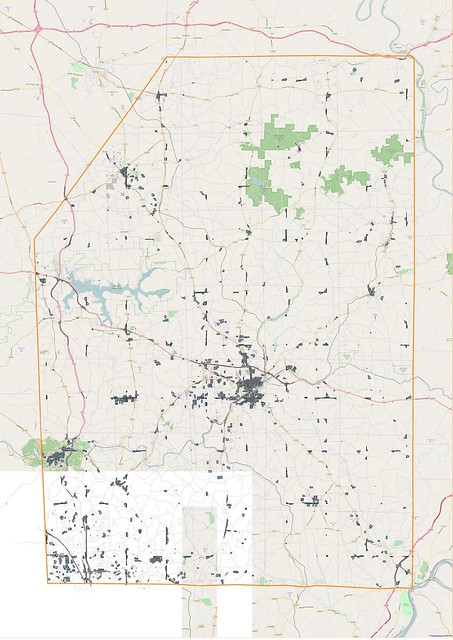 |
| View S from the Cathedral of Learning in Oakland, Pittsburgh, showing some urban areas used as tests in this post.
The incised valley of the Monogahela in the background contained railways and steel works. The plateau beyond has residential suburbs of Pittsburgh. To the left foreground are the woods and ravines of Schenley Park, with a residential area beyond. Source: Zack Weinberg via Wikimedia Commons CC-BY-SA
|
One of the obvious features of the highway network for the USA on OpenStreetMap is that road density is much higher in built-up areas. I started looking at how to measure this, when I recalled a method for identifying city blocks introduced to me by a Brazilian user of OpenStreetMap data.
 |
| Residential Areas for Butler Co, Pennsylvania, identified with the block method from OpenStreetMap data. Orange line outlines Butler County. |
The method itself is also really quite simple:
- Take the main road network for some area and make a union of it (which will be a MULTILINESTRING).
- Polygonize this data, and decompose to individual polygons.
